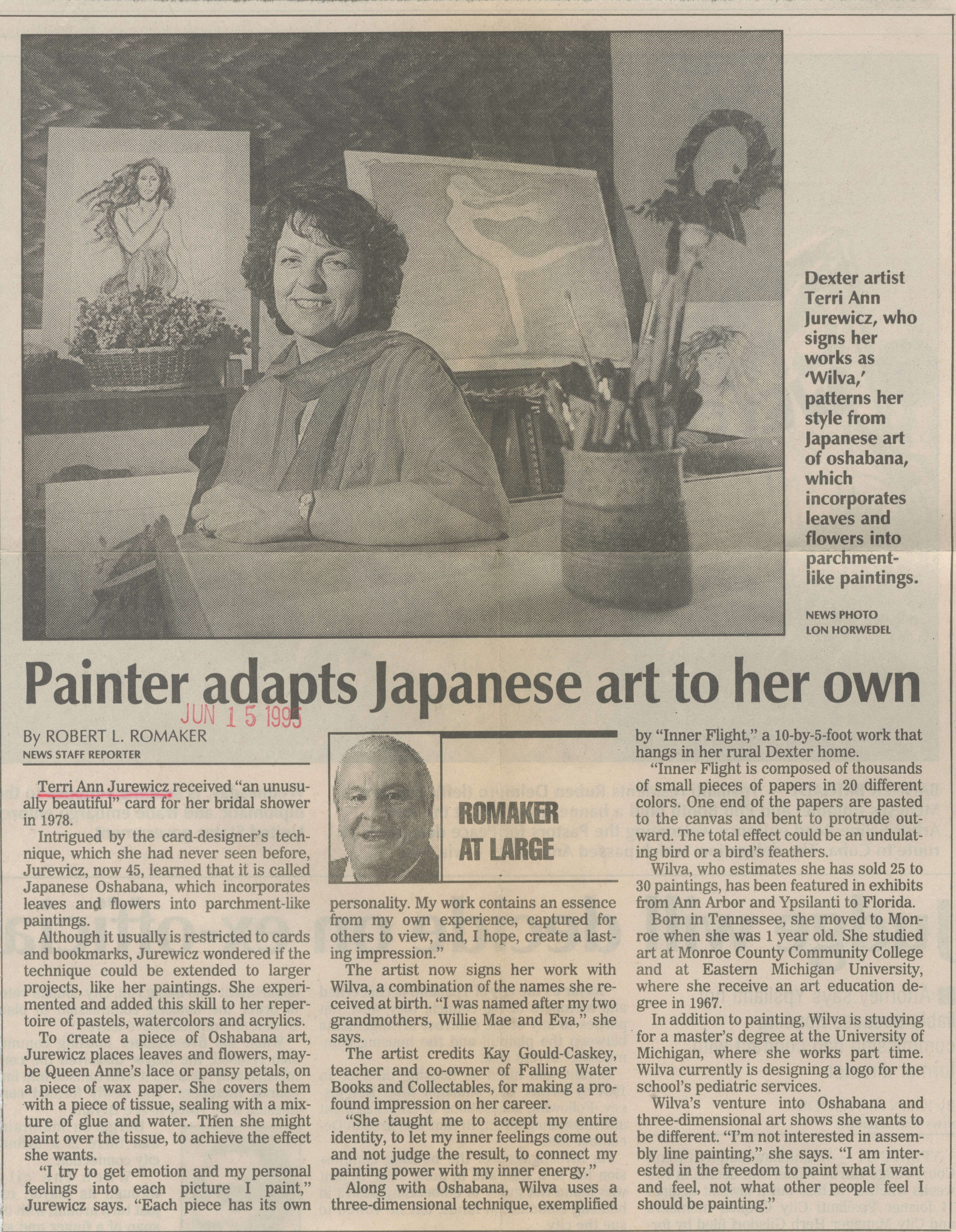Painter Adapts Japanese Art To Her Own

Dexter artist Terri Ann Jurewicz, who signs her works as 'Wilva/ patterns her style from Japanese art of oshabana, which incorporates leaves and flowers into parchment-like paintings.
NEWS PHOTO LON HORWEDEL
Painter adapts Japanese art to her own
By ROBERT L. ROMAKER
NEWS STAFF REPORTER
Terri Ann Jurewicz received “an unusually beautiful” card for her bridal shower in 1978.
Intrigued by the card-designer’s technique, which she had never seen before, Jurewicz, now 45, learned that it is called Japanese Oshabana, which incorporates leaves and flowers into parchment-like paintings.
Although it usually is restricted to cards and bookmarks, Jurewicz wondered if the technique could be extended to larger projects, like her paintings. She experimented and added this skill to her repertoire of pastels, watercolors and acrylics.
To create a piece of Oshabana art, Jurewicz places leaves and flowers, maybe Queen Anne’s lace or pansy petals, on a piece of wax paper. She covers them with a piece of tissue, sealing with a mixture of glue and water. Then she might paint over the tissue, to achieve the effect she wants.
“I try to get emotion and my personal feelings into each picture I paint,” Jurewicz says. “Each piece has its own personality. My work contains an essence from my own experience, captured for others to view, and, I hope, create a lasting impression.”
The artist now signs her work with Wilva, a combination of the names she received at birth. “I was named after my two grandmothers, Willie Mae and Eva,” she says.
The artist credits Kay Gould-Caskey, teacher and co-owner of Falling Water Books and Collectables, for making a profound impression on her career.
“She taught me to accept my entire identity, to let my inner feelings come out and not judge the result, to connect my painting power with my inner energy.” Along with Oshabana, Wilva uses a three-dimensional technique, exemplified by “Inner Flight,” a 10-by-5-foot work that hangs in her rural Dexter home.
“Inner Flight is composed of thousands of small pieces of papers in 20 different colors. One end of the papers are pasted to the canvas and bent to protrude outward. The total effect could be an undulating bird or a bird’s feathers.
Wilva, who estimates she has sold 25 to 30 paintings, has been featured in exhibits from Ann Arbor and Ypsilanti to Florida.
Bom in Tennessee, she moved to Monroe when she was 1 year old. She studied art at Monroe County Community College and at Eastern Michigan University, where she receive an art education degree in 1967.
In addition to painting, Wilva is studying for a master’s degree at the University of Michigan, where she works part time. Wilva currently is designing a logo for the school’s pediatric services.
Wilva’s venture into Oshabana and three-dimensional art shows she wants to be different. “I’m not interested in assembly line painting,” she says. “I am interested in the freedom to paint what I want and feel, not what other people feel I should be painting.”
Article
Subjects
Robert L. Romaker
Art & Artists
Painter
Old News
Ann Arbor News
Terri Ann Jurewicz
Wilva
Lon Horwedel